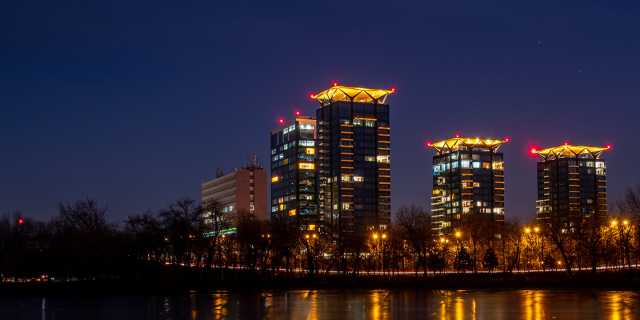Driven by global crises such as the tragic 9/11, military threats, or pandemics such as the one we are currently going through, the luxury bunker industry is flourishing. In 2016 alone, Rising S Company, a business that sells luxury bunkers, reported a 700% increase in sales when compared to the previous year. Representatives of other businesses in the industry say that since last year, amid the pandemic, interest in such acquisitions has increased even more.
While buildings of this type were a few decades ago just a safe place to shelter in case of emergency and offered strictly the facilities to ensure survival, things have radically changed today.
Companies dealing with this type of property have understood that survival is not enough for their customers. Along with physical well-being, it is mandatory to ensure their mental well-being. And this can only be done by offering conditions similar to what we call a normal life, whether it’s a meal at a restaurant or the weekly yoga session. The COVID-19 crisis has shown us more than ever what effects isolation can have, from depression to severe forms of burnout and more. And this happened as we knew that, sooner or later, we will regain our freedom to resume our daily activities. In a fatalistic scenario, the need to make sure that you have the best conditions to ensure a decent life becomes much more acute. That is why billionaires in all fields, from actors to businessmen, are willing to invest fabulous sums to feel safe with their loved ones in shelters whether private or part of some complexes but capable of withstanding attacks or cataclysms of any kind.
Among the facilities with which the luxury bunkers are equipped are the gardens with simulated natural light, able to create the sensation of day or night, hydroponic farms, wineries, nightclubs, libraries, or water parks.
The good news is that you don't have to have a colossal fortune to afford a bunker. The price of a luxury shelter can reach USD 5 million, as is the case of those built-in several parts of the world (Europe, US) by the company Vivos, but there are also options at EUR 25,000-30,000, such as those in the Northeast Bunkers portfolio. Bunker builders usually use abandoned shelters in countries like Germany or the Czech Republic, built in the first two world wars, which they turn into premium residences. Spread even over a few square kilometers and structured on several levels, luxury underground shelters usually have an average capacity to accommodate a few dozen people.
In parallel with the developers who design shelters for emergencies, there are also food producers that have a huge shelf life of up to 25 years.
Bunkers are sometimes also used to store heritage assets, to avoid disasters such as the historic destruction of the Library of Alexandria.
And their history is not as recent as we might think. Archaeologists have discovered in Cappadocia (Turkey) ancient cities located more than 50 meters below the ground, which could be similar to today's bunkers. Among other things, they had bedrooms, toilets, a church, and a town hall.
Data for this article was obtained from bbc.com, cnn.com, theguardian.co.uk and cnbc.com.
More on our blog
- One Insider
- Real estate: past, present and future
- Layout and style
- Real estate education
- Free time in Bucharest
- Tourist attractions in Bucharest
- The neighborhoods of Bucharest
Read also






